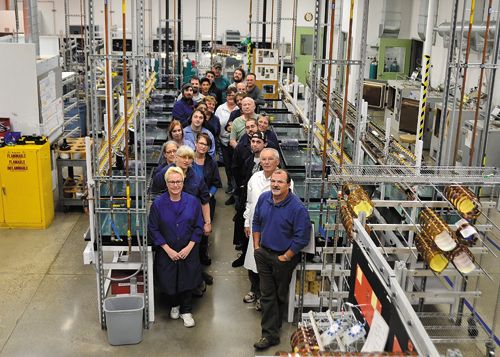Phenomenex Announces New Californian GC Column Facility
Phenomenex Inc. has announced the opening of a new manufacturing and development facility dedicated to the company’s gas chromatography columns.
Photo Credit: Phenonmenex Inc.

Phenomenex Inc. (Torrance, California, USA) has announced the opening of a new manufacturing and development facility dedicated to the company’s gas chromatography columns. The 15,000-square-foot facility located in Sacramento, California, USA, supports twice the production capacity, reportedly improving Phenomenex’s logistics and delivery speeds.
“Detailed and exhaustive planning went into creating an efficient production floor, using lean principles to maximize the use of space while minimizing the movement of people and materials,” said Emmet Welch, senior product development manager for Phenomenex.
“We have also included a centralized piping system that reduces the cost and movement of process gasses. With advanced, automated workflows, this new facility will be capable of supporting significant growth in Phenomenex GC manufacturing and new product development for many years,” continued Welch.
Commenting on the décor of the new facility, Phenomenex founder Fasha Mahjoor praised the “vibrant colours and pleasing architectural spaces.”
“Our people are the reason for our success, and it’s our goal and responsibility to give them an environment that inspires teamwork and camaraderie and promotes their health and wellbeing,” said Mahjoor.
For more information, please visit www.phenomenex.com

Regulatory Deadlines and Supply Chain Challenges Take Center Stage in Nitrosamine Discussion
April 10th 2025During an LCGC International peer exchange, Aloka Srinivasan, Mayank Bhanti, and Amber Burch discussed the regulatory deadlines and supply chain challenges that come with nitrosamine analysis.












